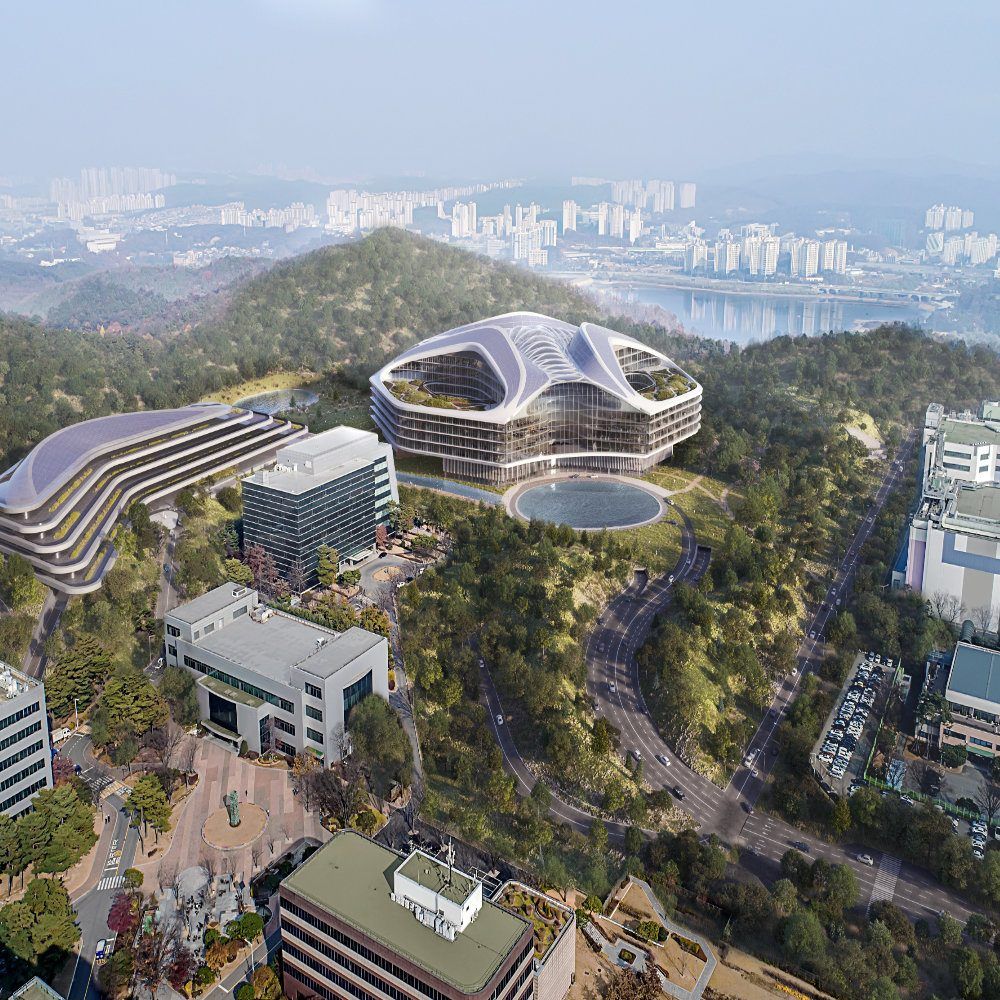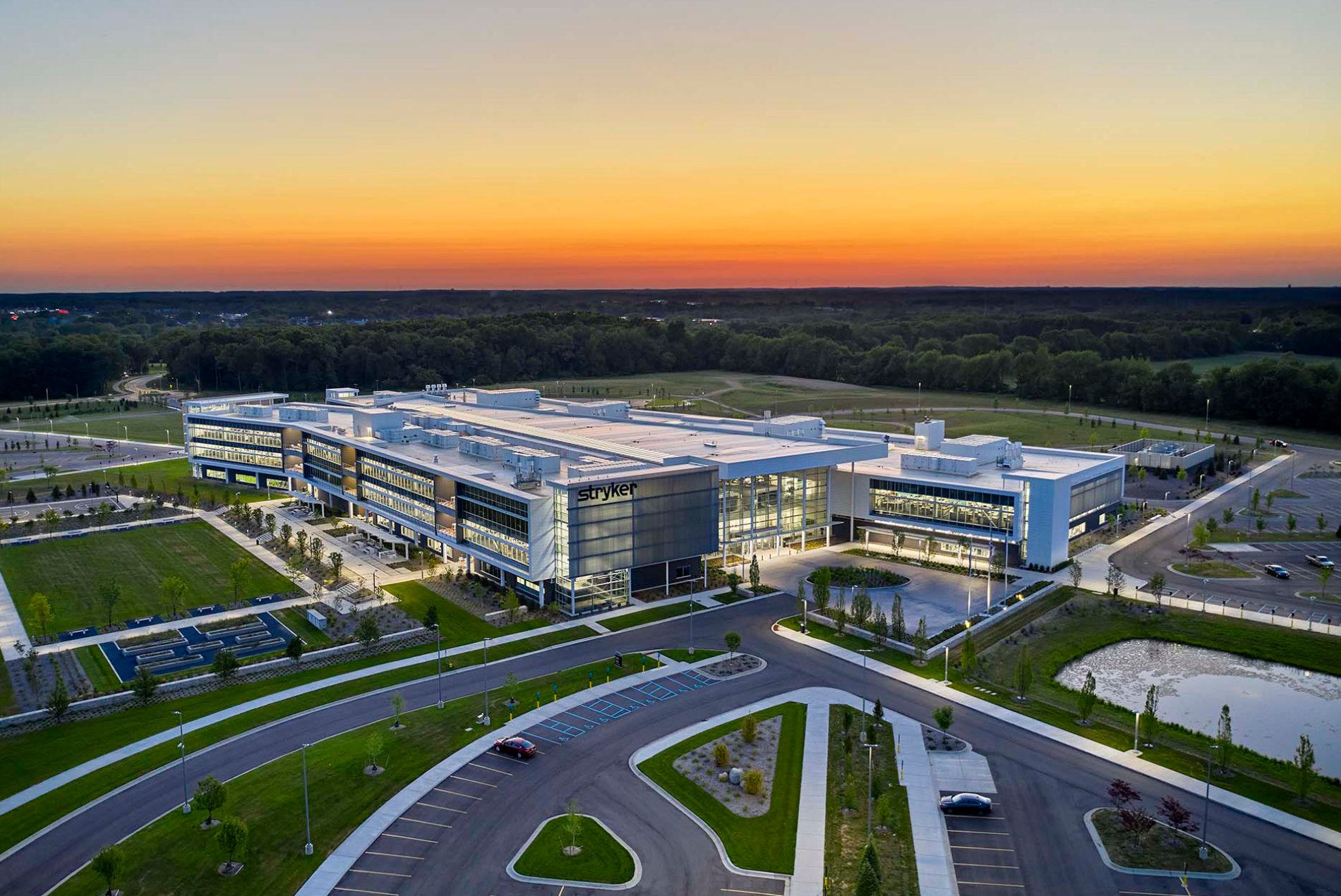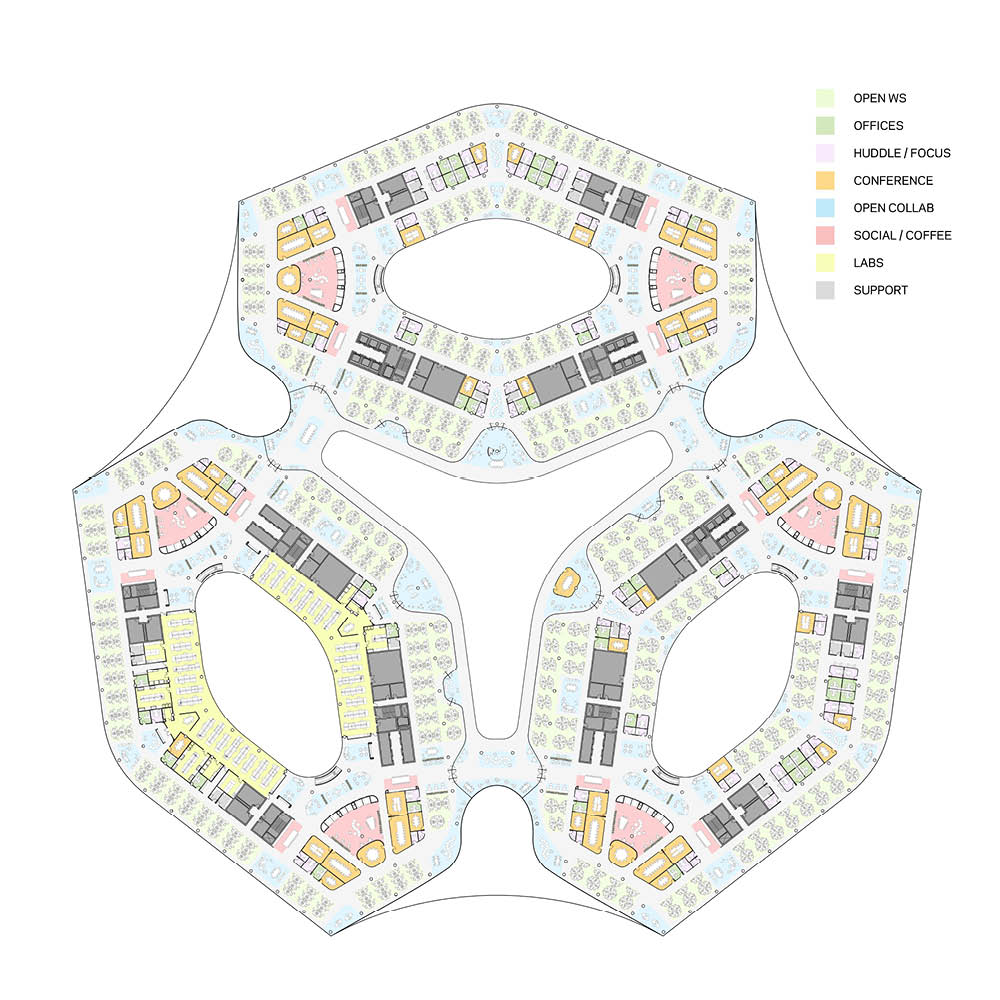
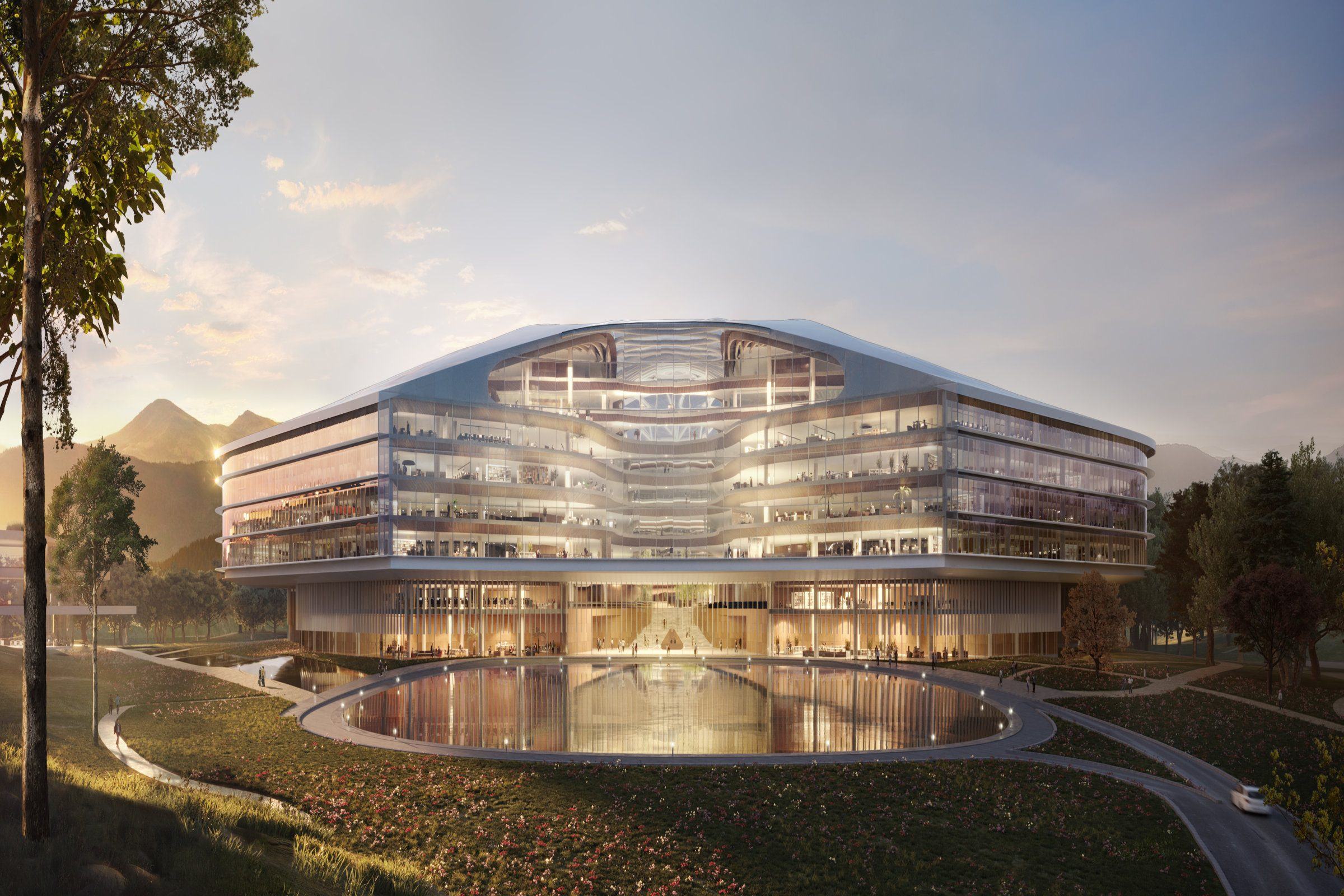
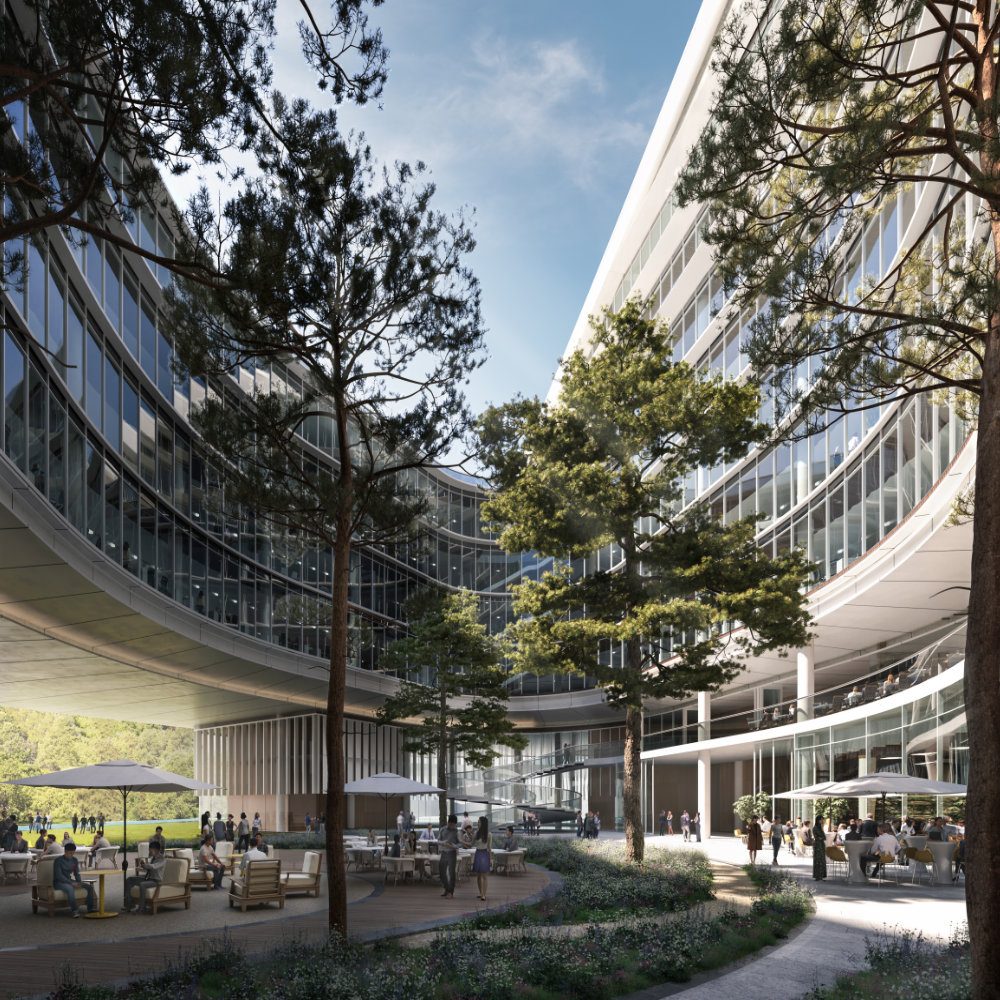
The form and undulating roofscape are in harmony with the surrounding hills. Structured openings in the building form incorporate light, air and the landscape as essential design elements, offering occupants direct access to nature.
As a companion to the main complex, the sub R&D building embraces the hillside from which it has emerged. Its stepped terraces are landscaped with vegetation, gardens, paths and outdoor seating areas that act as extensions of the natural green hillside.
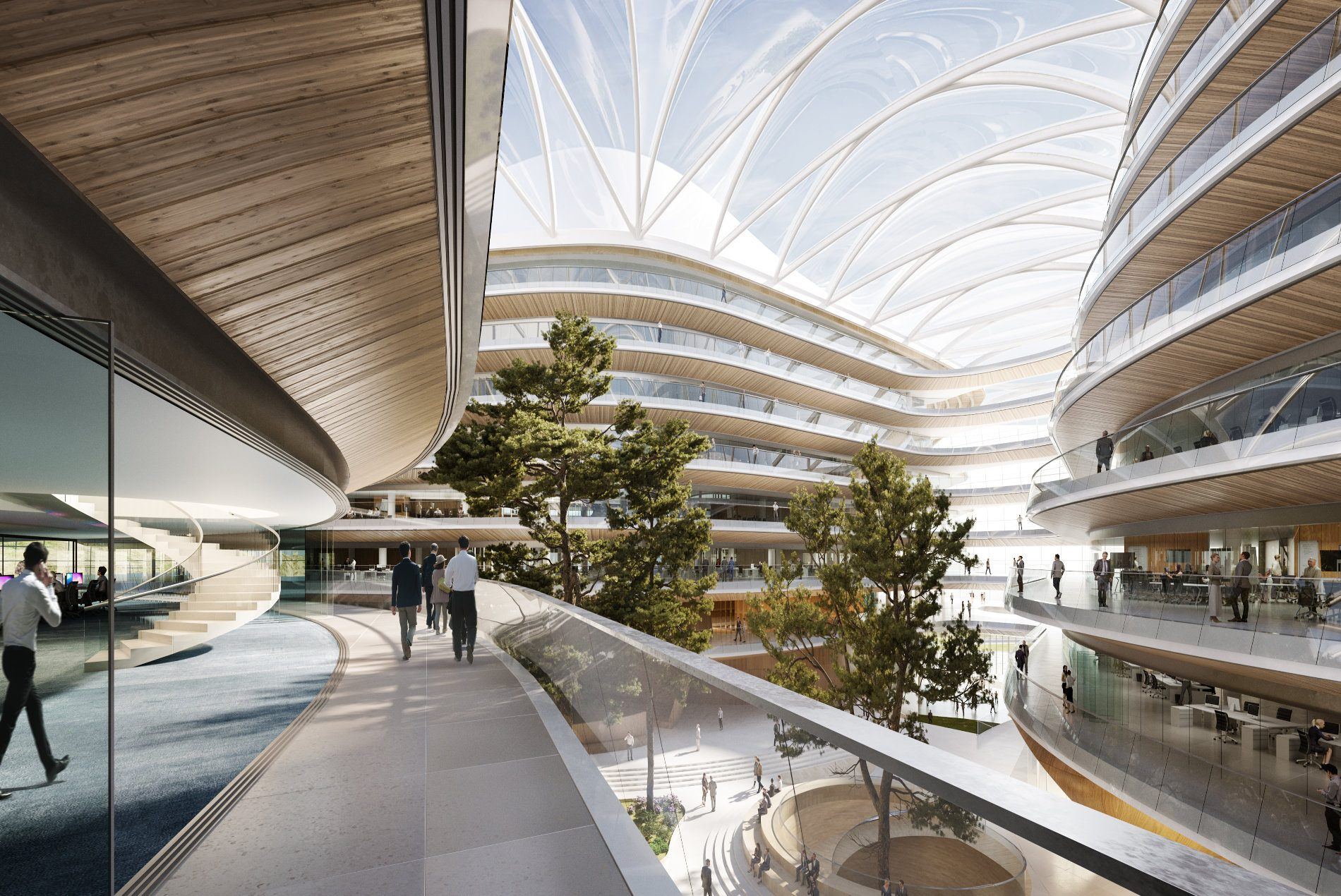
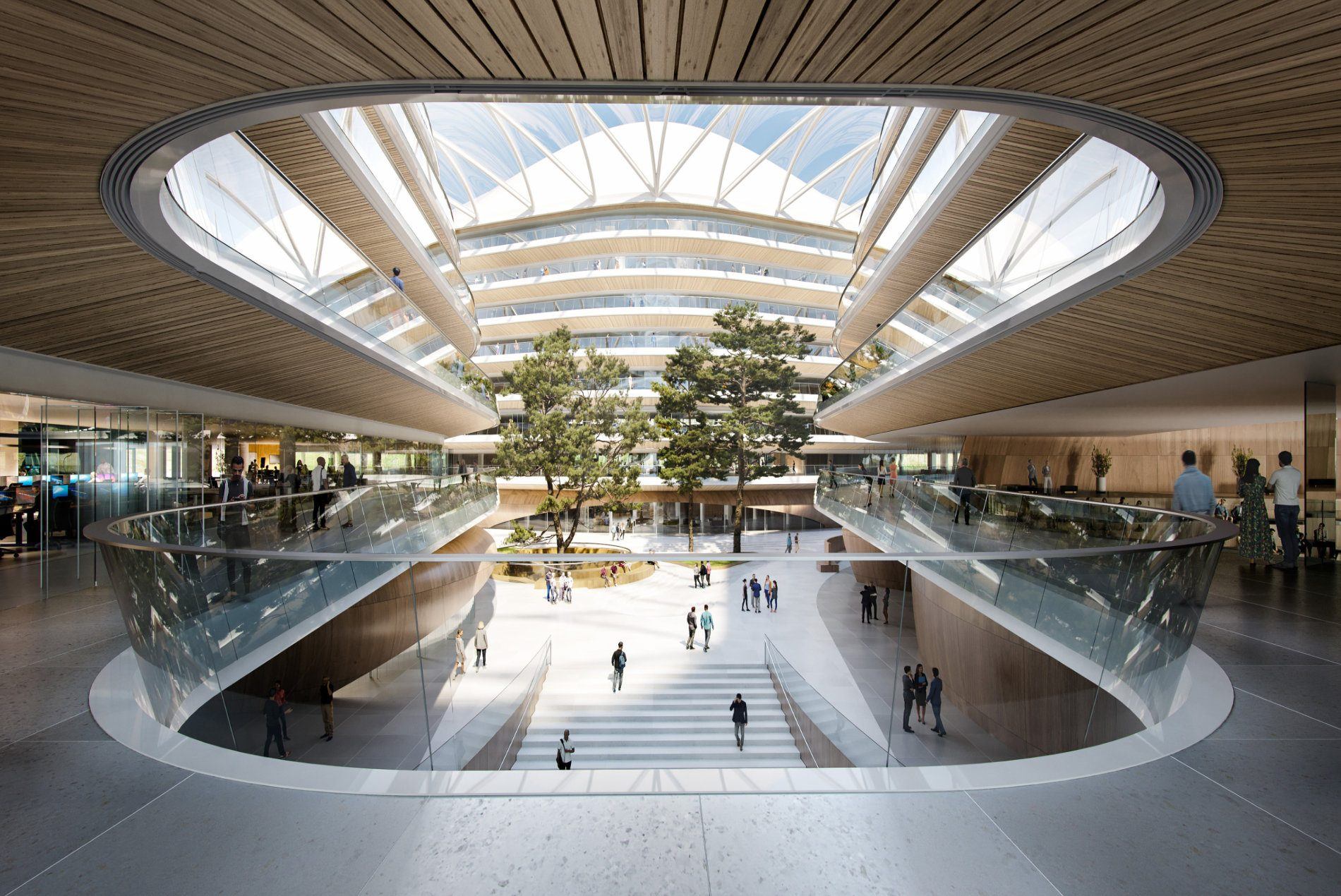
The design of the main R&D complex ensures that the company’s people are connected. They all benefit from ample daylight, openness, and physical and visual access to their colleagues and outdoors.
The efficient plan ensures that every desk is within 46 feet of the building’s perimeter, giving everyone access to views outside and the amenities placed around the building perimeter. People can walk around the outer perimeter of the building—from corner to corner in every direction—in less than a minute.
The strategy of providing neighborhood-based environments creates micro communities within the larger floor plates and connects everyone with central amenities.
The design creates a neurodiverse-friendly workplace that enables people from diverse backgrounds to thrive. Employees can choose their appropriate work environments for each task. Spaces are optimized for acoustic quality, thermal comfort and daylighting. They can easily adapt to the needs of both hypersensitive and hyposensitive occupants.
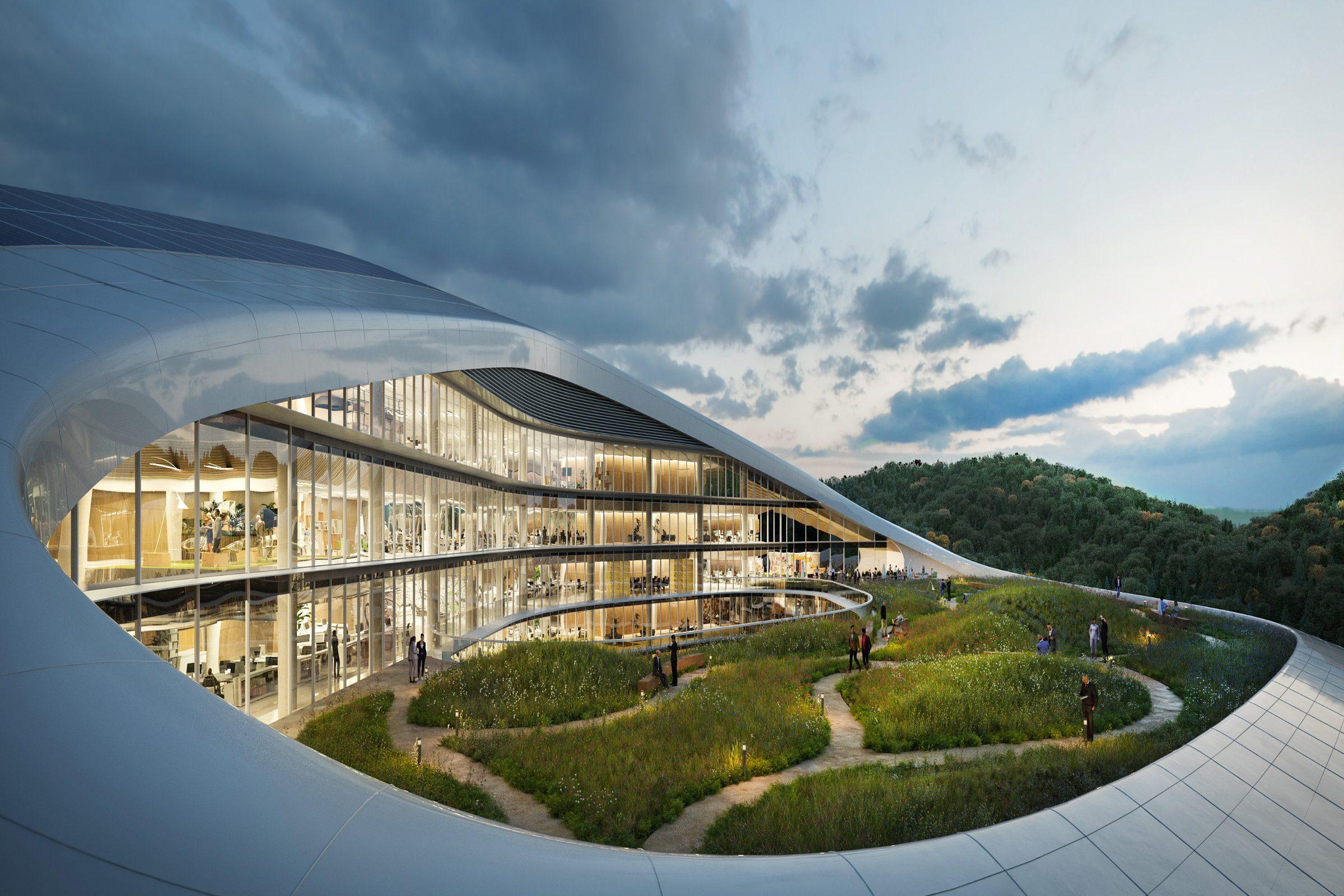
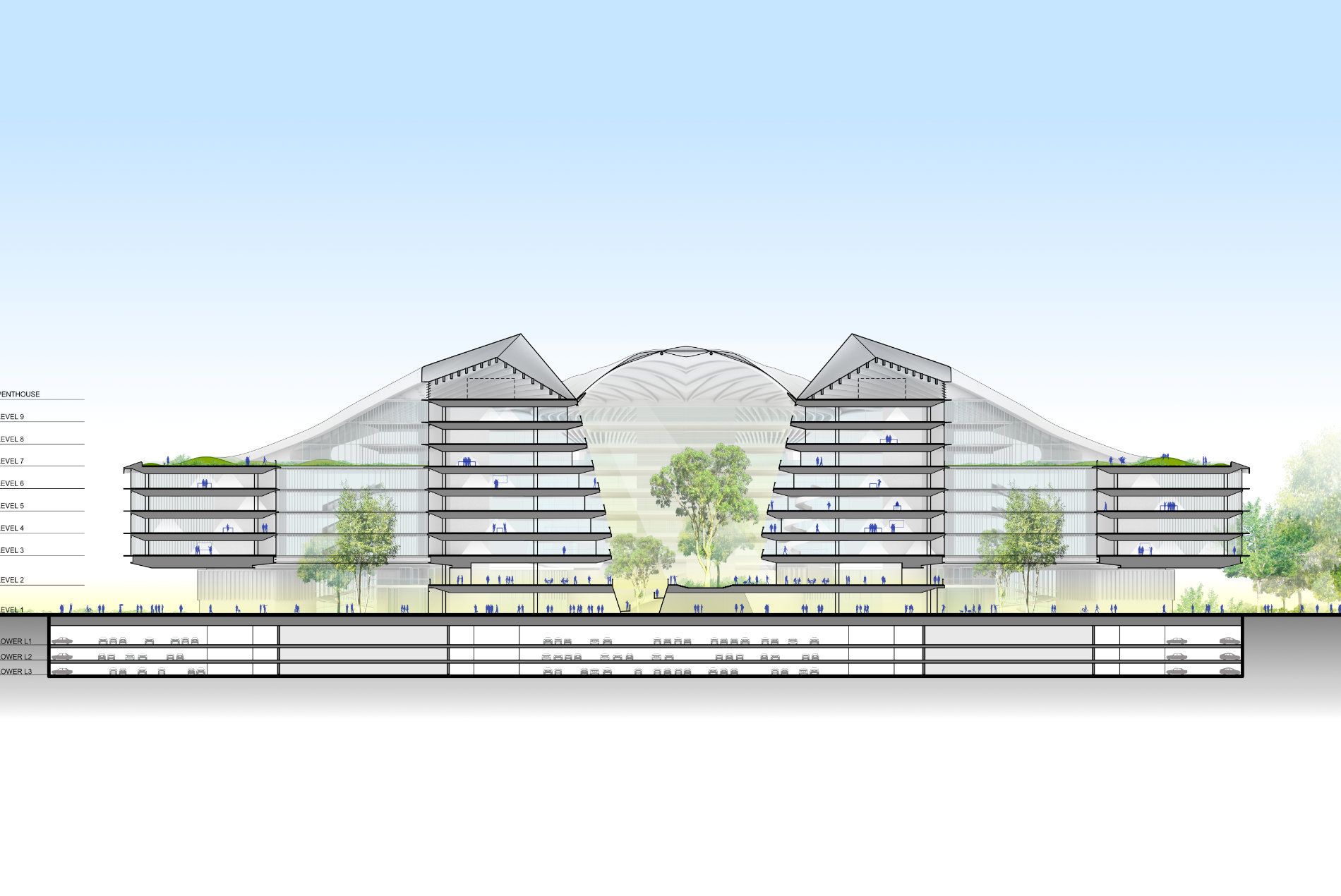
The design challenges preconceived notions of a typical scientific research facility, putting science “on display” by maximizing transparency and integration between labs, offices and public spaces.
Public-facing technology labs, high-tech product displays, and science-inspired artwork blend the research activities into the building design.
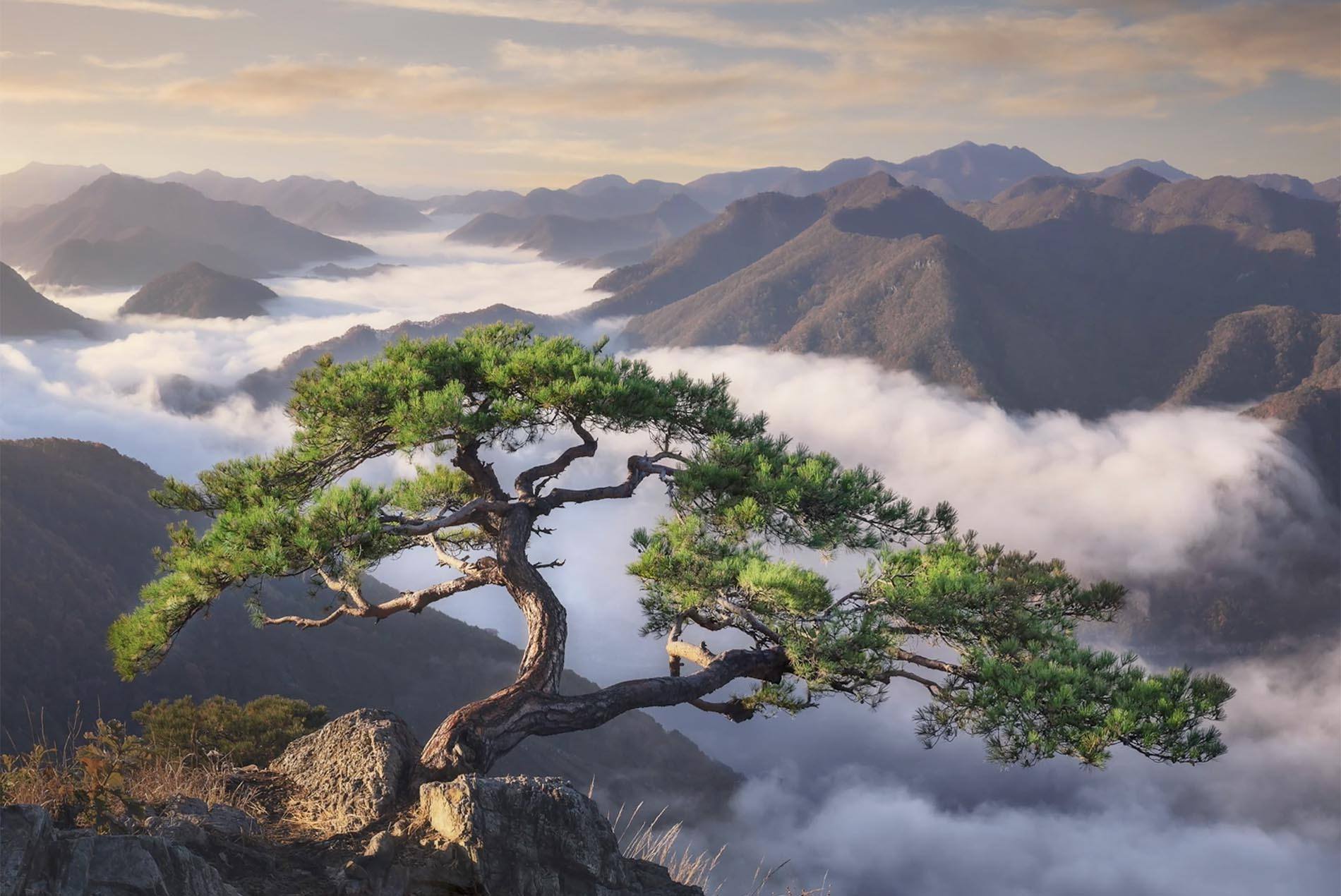
Responding to the temperate broadleaf forest biome, the architecture derives its form from a response to the changing seasons, position of the sun and interactions with the landscape.
The building design takes cues from the native pine forest and the indigenous Eurasian magpie, emulating the local architectural vernacular. Pine trees are a primary landscape element that helps the mixed conifer deciduous forest grow quickly and removes carbon dioxide from the atmosphere. These pines also absorb and distribute water across the site.
Dynamic louvers that open to provide natural ventilation control the EFTE panels above the central atrium. These emulate the magpie, which has wings that lock in place as they spread and open. The changing, iridescent colors found in magpie feathers also informed the colors of the dichroic glass facades.
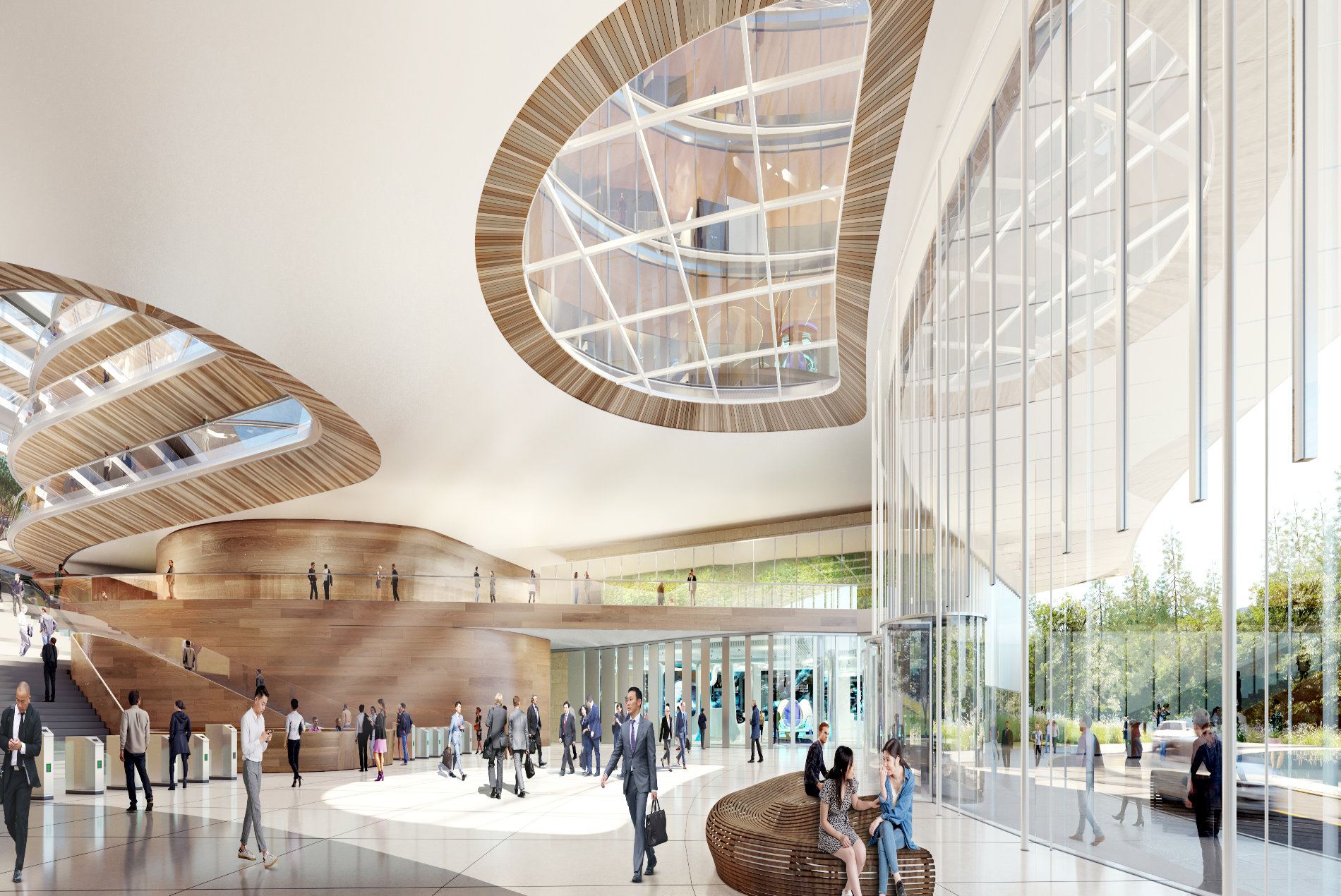
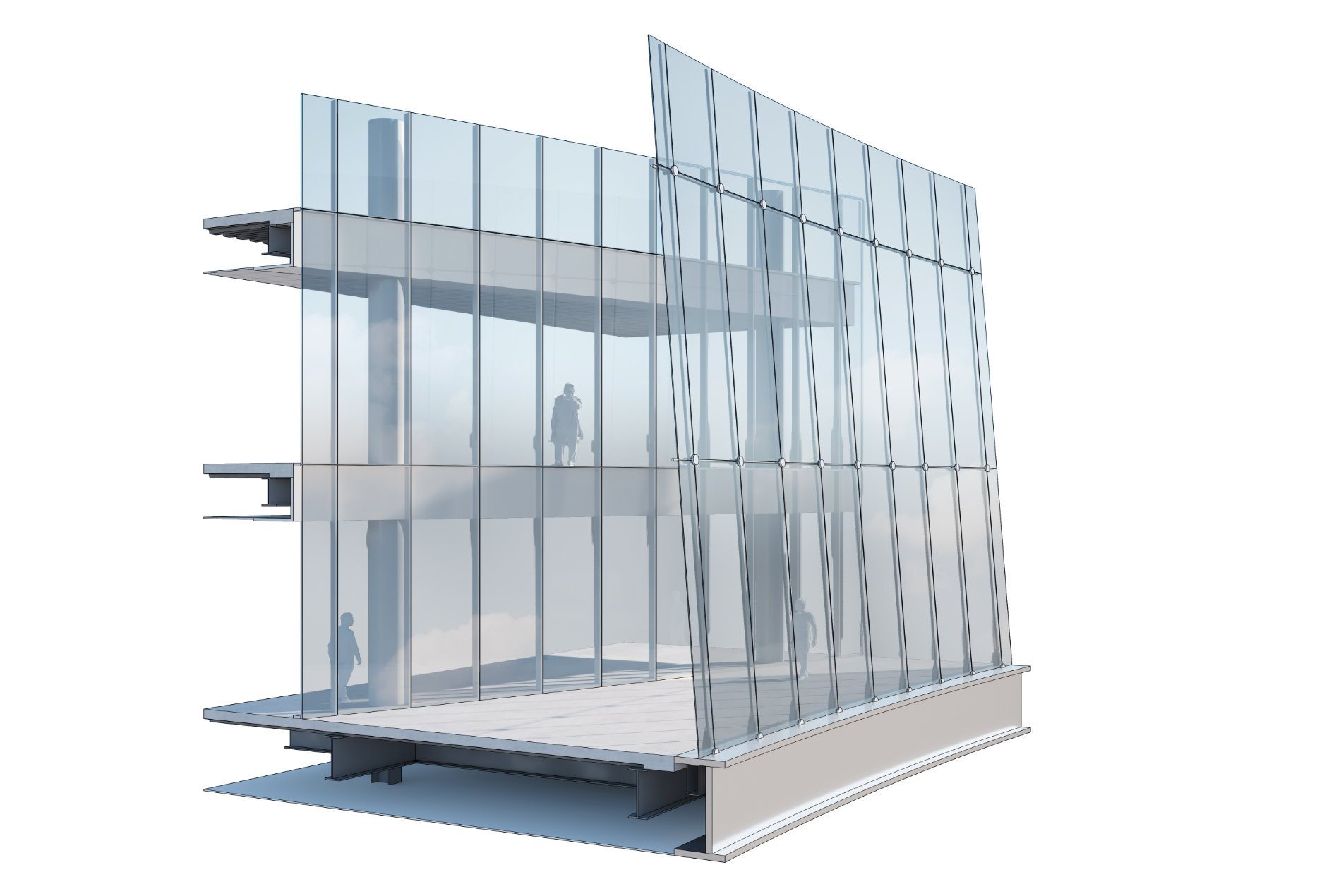
The LEED Platinum design is net-zero ready. It attains the highest level of sustainability for research campuses.
The team borrowed from the natural intelligence and systems of the site—the forest, meadows and water—to create a holistic sustainable campus. The ecology of the site and the technology of the buildings interface with and support each other. Biology becomes technology.
On-site renewable energy will generate up to 15 percent of the building’s predicted annual energy use. A roof integrated PV system is coupled with solar thermal panels to satisfy the building’s electric and thermal demands.
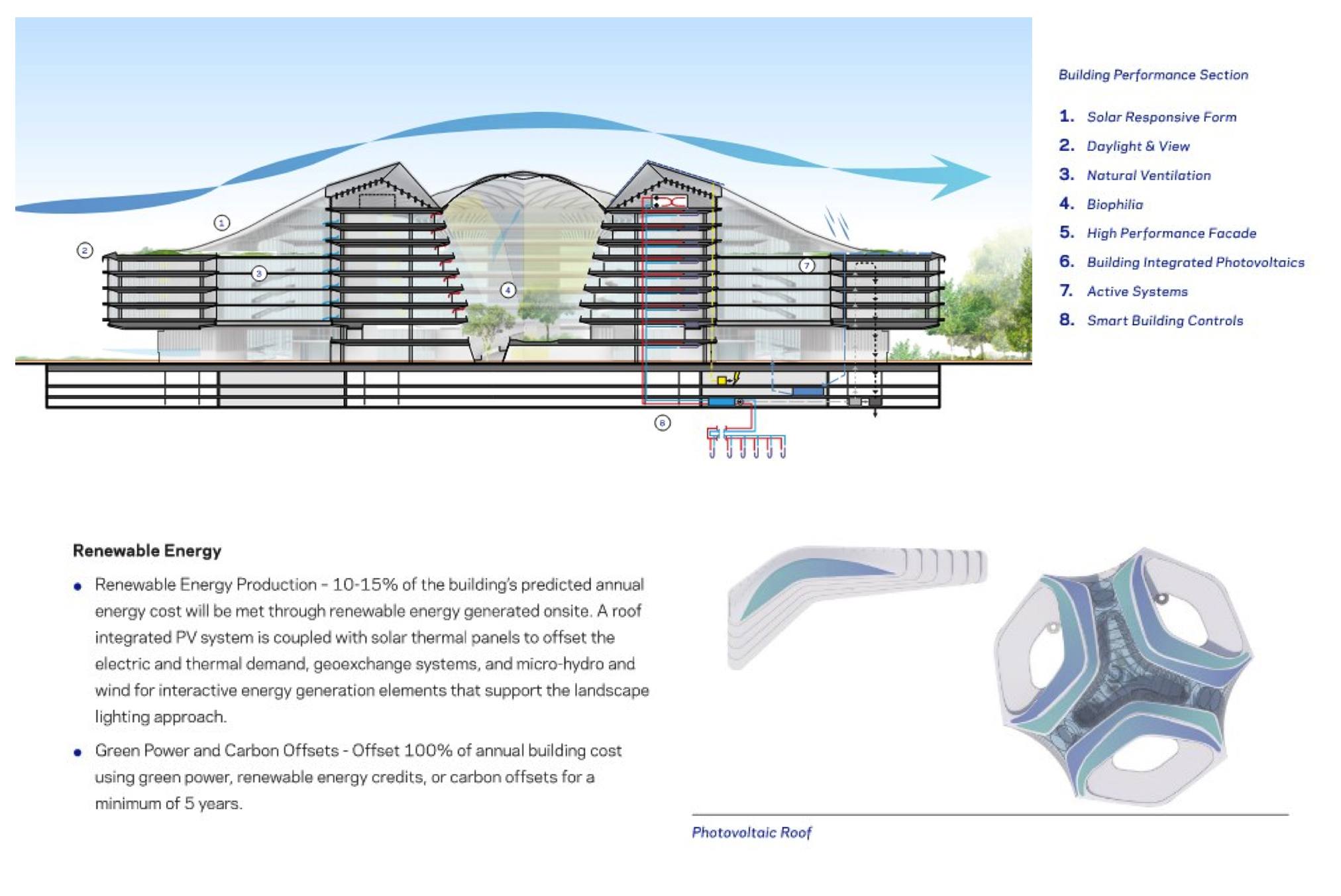
The mountain provides water through rain and snowmelt that collects in seasonal lakes at the top of the hill and runs down into the valley. Retention ponds and ‘underground rivers’ capture this mountain runoff at the edge of the campus.
This water, along with treated wastewater, irrigates the surrounding forest landscape, helping to regenerate the valley. In this circular system, the building and the site are inextricably linked. They feed off and rely on each other.
Underground basins store water for irrigation. Paired with advanced building technologies, this water also provides sources of thermal storage and exchange storage. It helps cool the buildings in the summer.
A blackwater treatment system, infiltration system, and collecting pools and cisterns position the complex to achieve net-zero water use.
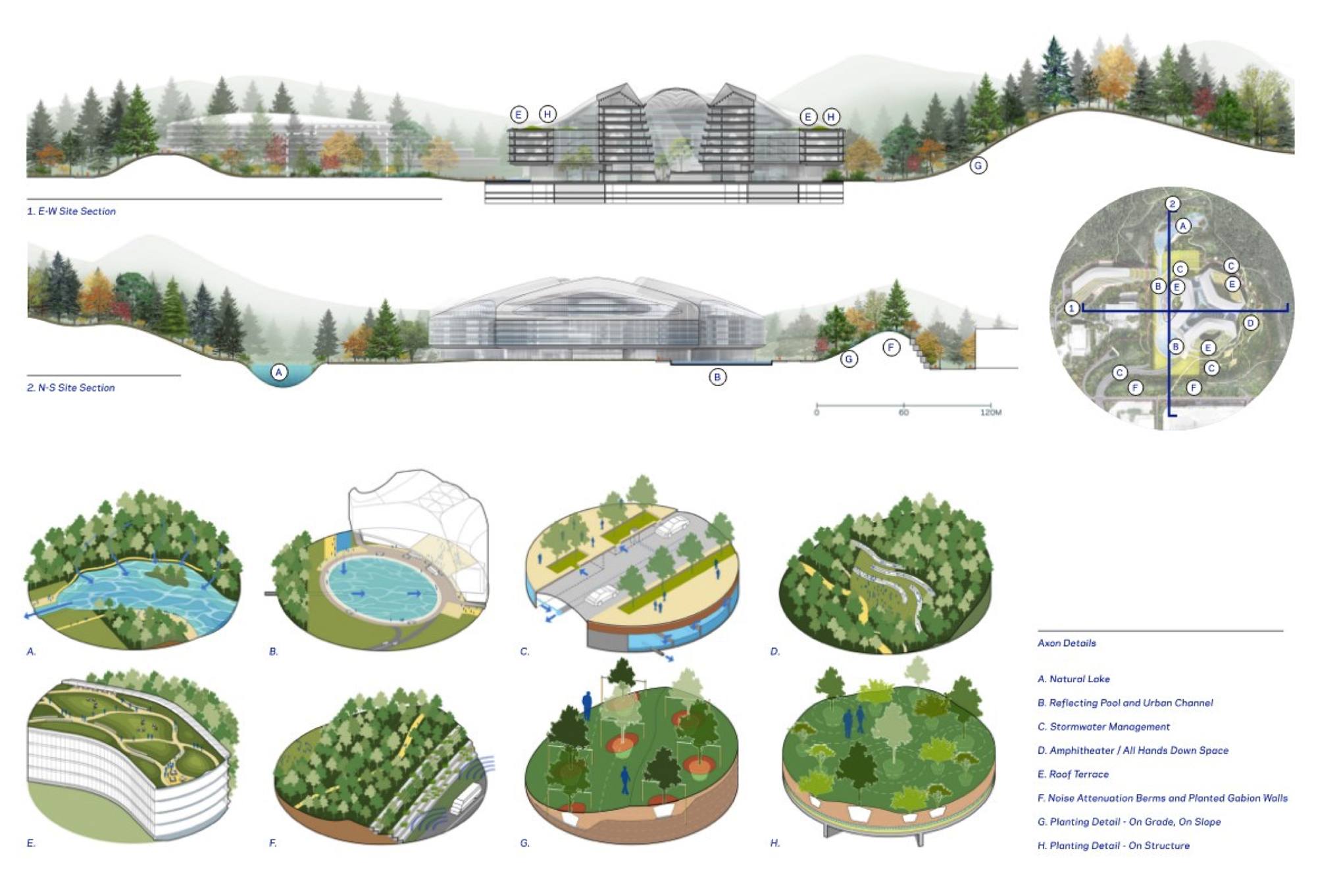
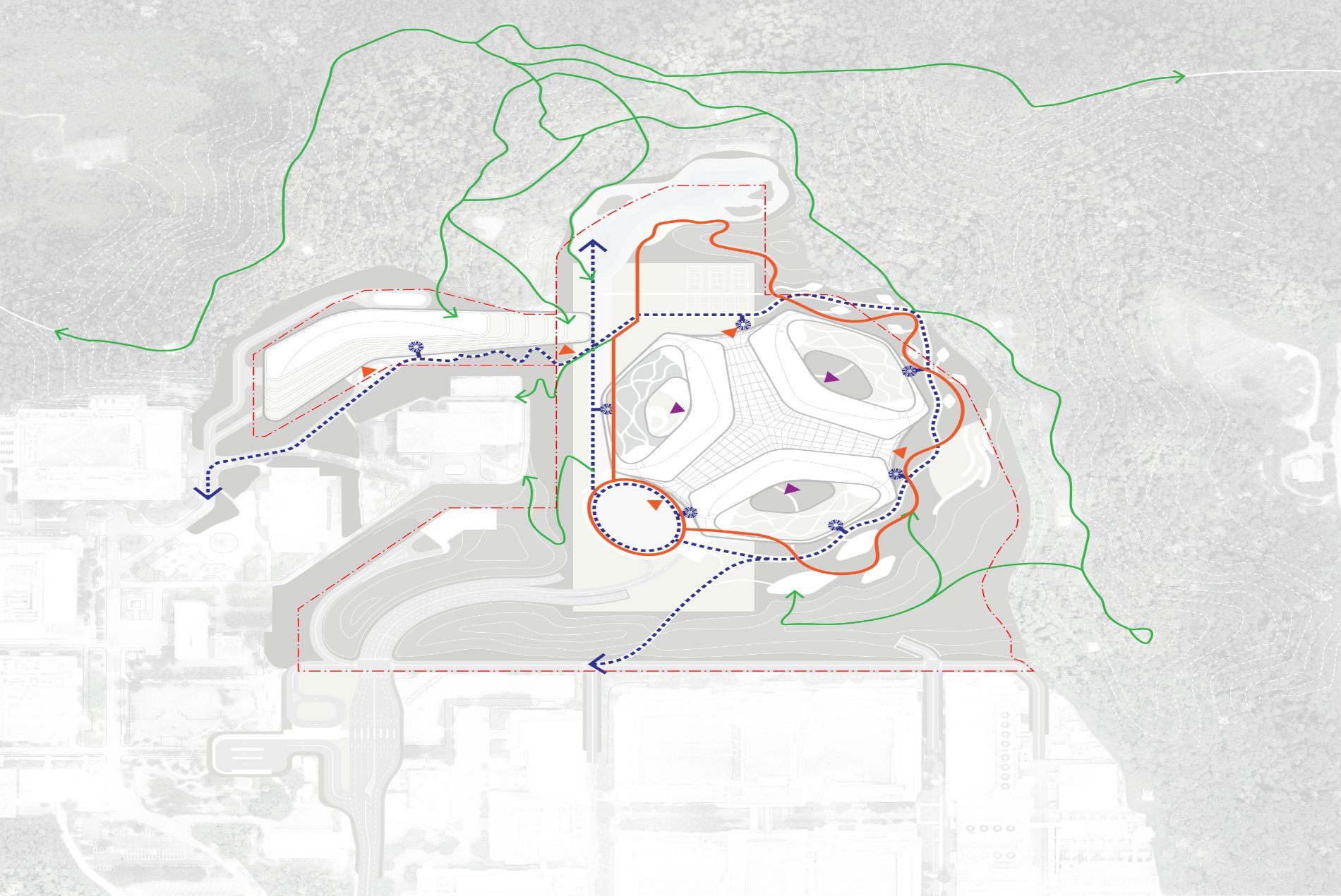
The plan prioritizes pedestrian safety, comfort and efficiency.
All employee parking is underground, allowing for a car-free landscape. The carefully designed campus plan eliminates the need for even small personal electric vehicles.
Open staircases are strategically located at nodes within each of the building pavilions, as well as along the atriums.
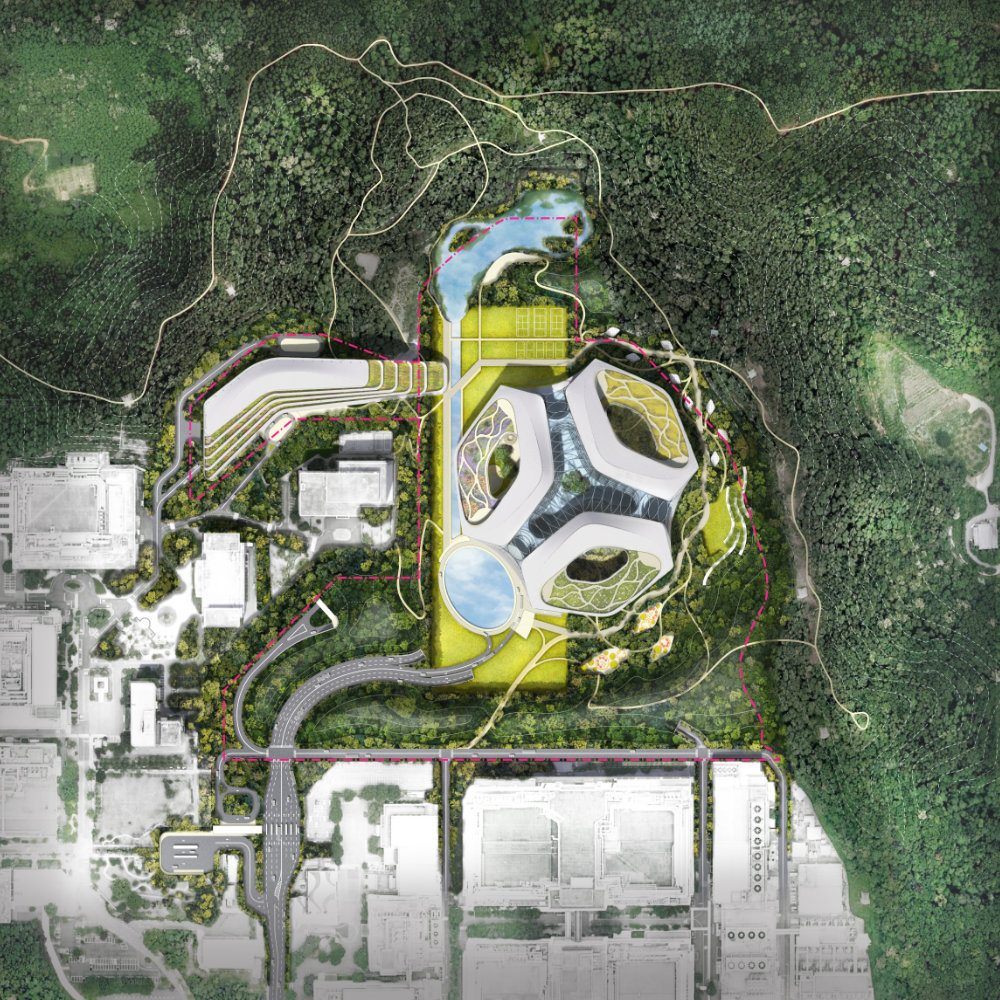
The design treats the company’s land as a precious asset. Consolidating the new main R&D center and sub R&D facility preserves a large portion of the campus site for future development. With a carefully phased construction approach, the site will accommodate needs the company cannot predict for years to come.
The highly flexible interior space will allow the company to adapt to whatever the future brings.
